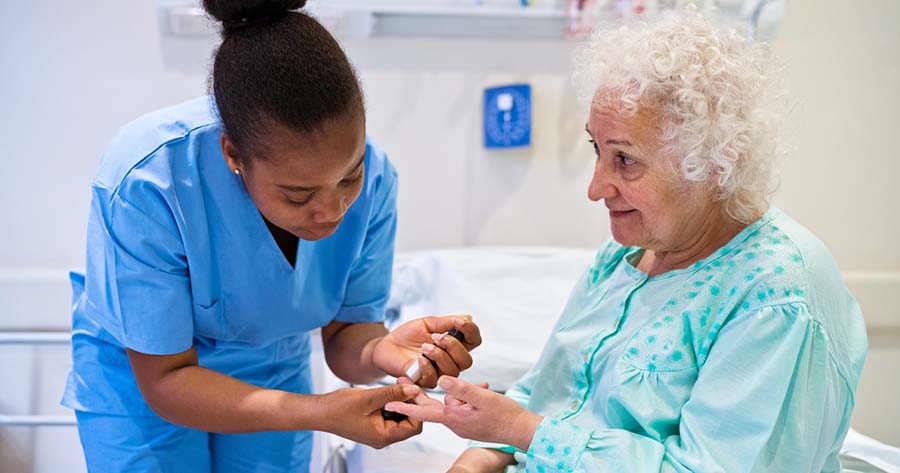There is no doubt that exercise provides a wealth of health benefits for everyone, but especially so for the older adult. The fact that increasing physical activity can give rise to improvements in cardiovascular, metabolic, endocrine and psychological health is well documented (King et al, 1997; American College of Sports Medicine, 1998; Bellardinelli et al, 1999).
Exercise is also associated with a reduction in mortality and age-related morbidity (Vita et al, 1998). However, according to Nied and Franklin (2002) approximately 75% of the older population of the US are insufficiently active to achieve these health benefits. In addition, a study carried out in inner city Manchester revealed a high prevalence of type 2 diabetes in all ethnic groups, which was surprisingly high in those of European origin. The authors concluded that the likely contributors included deprivation, educational level, obesity and physical inactivity (Riste et al, 2001).
As the incidence of diabetes is rising and can be as high as 30% in the elderly (Ravaglia et al, 2006), greater emphasis needs to be placed on the benefits that exercise can bring, not only to the elderly person with diabetes, but also those who have not, as yet, developed the condition.
Nied and Franklin (2002) point out that the benefits of aerobic exercise are widely accepted, but the importance of resistance training in the elderly is becoming increasingly apparent. Muscle strength declines by 15% per decade after the age of 50 years and by 30% per decade after the age of 70 years (American College of Sports Medicine, 1998), principally due to loss of muscle mass, and occurs to a greater extent in older women compared to older men.
Results from the Framingham Disability Study (Jette and Branch, 1981) showed that 45% of women over the age of 65 years and 65% older than 75 years could not lift 10lbs in weight. Yet resistance training has been shown to result in 25–100% strength gains in older adults (Singh et al, 1999). Carrying out daily activities relies on strength, especially in the elderly and the difference in walking speeds of older people tends to be related to leg strength. Increasing strength has been shown to improve walking endurance and stair-climbing power. Singh et al (1999) also suggest that training increases the nitrogen balance and can, when combined with adequate nutrition, prevent muscle wasting in nursing home residents.
Exercise recommendations for individuals will naturally depend on co-morbidities and also on their baseline level of physical exercise. Nied and Franklin (2002) suggest that sedentary individuals should begin with a very low level and progress gradually up to moderate activity. They also state that the elderly should exercise at the maximum intensity at which they are still able to comfortably carry on a conversation, using warm-up and cool-down periods of 5–10 minutes of less intensive exercise such as slow walking or stretching. Using warm-up and cool-down periods helps to reduce the risks associated with hypotension, musculoskeletal and cardiovascular complications. However, elderly people who are deconditioned or sedentary need to be encouraged to carry out balance and flexibility training to improve their functionality before attempting any aerobic exercise (Nied and Franklin, 2002).
Frequently elderly people with diabetes have more than one co-morbidity, therefore it has been suggested that for most older adults a medical history and physical examination will be necessary to identify cardiac risk factors and exertional signs and symptoms along with physical limitations (Nied and Franklin, 2002). There may be many barriers to older people taking exercise, not least the individual’s attitude. On the other hand, some of the barriers such as disability, fear, habit and household income can be overcome by individualising the exercise routine.
Poirier et al (2006) have highlighted some factors for consideration when planning any exercise programme. Regarding predictors of compliance to pharmacological and non-pharmacological interventions in individuals with cardiovascular disease, Poirier et al (2006) suggest that the disease itself, the treatment regimen, the environment, the patient–therapist interaction and the individual themselves need to be taken into account prior to any intervention. Diabetes warrants similar considerations.
Apart from informing our elderly patients – particularly those who are obese – that they need to take more exercise, how many of us actually take the time to discuss exercise in depth and the benefits it can offer to people’s health and general well-being if they incorporate a little into their daily routines? It seems that here is an area where we as healthcare professionals can make a massive impact, not only for those with diabetes, but also for those relatives who may not, as yet, have developed the condition. Nied and Franklin (2002) suggest that the most successful adherence to long-term exercise is most likely achieved by identifying and overcoming barriers to activity, setting specific goals, recruiting family support and providing positive reinforcement. Although such counselling is time consuming, the benefits of elderly people adopting some form of exercise outweighs the arguments for ignoring the issue.
Accepting that most elderly people cannot or will not exercise or use lack of time as an excuse for not trying to change the habits of a lifetime should not be accepted. Exercising needs to be fun – people are more likely to carry out activities they find pleasurable. The greatest potential benefit is in those people who were least active before beginning regular physical activity and this can be achieved at relatively low levels of activity, therefore there is no excuse for those who say ‘I have never exercised in my life!’ So let our challenge for the future be to get all our elderly people with diabetes up and moving to improve physiological functioning, lessen cardiovascular symptoms, improve muscle fitness, reduce mortality and generally raise their quality of life.





Key scientific developments presented at the conference.
6 Aug 2025